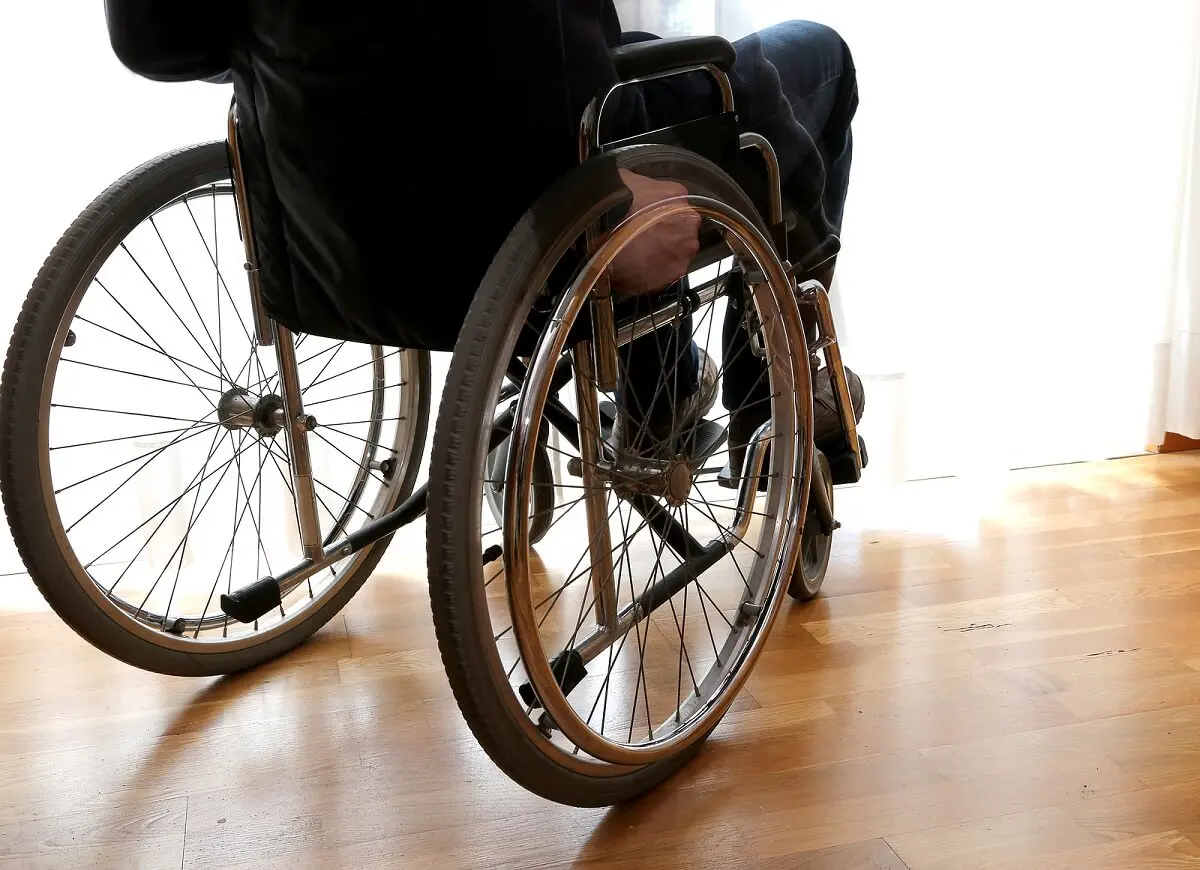The Effects of Art Therapy on Multiple Sclerosis


Written and verified by the doctor Maryel Alvarado Nieto
Multiple sclerosis (MS) is a degenerative inflammatory disease that affects the central nervous system. Although its cause is not yet fully understood, it involves an autoimmune response. The inflammatory reaction triggered damages the myelin sheath of neurons, affecting nerve transmission. Several studies propose the use of art therapy in multiple sclerosis, and we’ll analyze it here.
Being a neurodegenerative disease, the symptoms of multiple sclerosis evolve over time, aggravating the condition of patients. It’s even disabling.
Dealing with a diagnosis of MS involves multidisciplinary management. This approach should include halting the progression of the damage or at least mitigating the symptoms. However, it should also offer the patient the possibilities to develop social and coping skills.
What is art therapy?
The creation of mental images is a natural process in all human beings, whether or not they’re artistically gifted. Art therapy is based on the use of creativity to explore, discover, confront and express a person’s emotions, both on a conscious and subconscious level.
This form of expression allows a connection with the self, but also with other human beings. The purpose of art therapy is to embark on a journey of self-knowledge.
In this journey, a condition or illness can be confronted as a creation is made, endowing the patient with a new way of coping with his or her conditin. Therefore, art therapy is able to produce a relief of the emotional afflictions of the disease and help improve a person’s quality of life.
The basic requirements of art therapies
As with any therapeutic action, it’s necessary that the personnel involved is trained. In this way, the therapist will be able to guide the patients attending the session. Likewise, a pleasant environment free of external distractions generates a sense of comfort in the participants.
Art therapy in multiple sclerosis must take into account the various limitations that the condition may cause, as these vary among patients. The therapist should not only be skilled in the management of emotions, but should also have sufficient notions about the person’s clinical picture.

We think you may be interested in reading this, too: The Four Types of Multiple Sclerosis
Why does art therapy help with multiple sclerosis?
Art in its various forms has accompanied humanity since its beginnings. Therefore, it’s widely accepted that some people possess an inherent need to convey a message through artistic creation.
This need, in a way, serves them as a source of catharsis to cope with the events of one’s existence. Art therapy is intended to have a similar utility in patients with psychological and psychiatric problems, but this time guided by a therapist.
Multiple sclerosis produces affections in the cognitive and emotional areas that are difficult to manage, and art therapy is an alternative treatment that helps in the process of acceptance and resilience in the face of the disease.
Flexible creativity
To capture an image starts from a conscious idea of creation. This is modified in the subconscious as time and effort are invested in its elaboration.
And although the result is different from the initial mental image and also depends on the individual motor capacity, art therapy takes advantage of the dedication involved in the creative process, rather than obtaining pieces worthy of a museum.
However, it’s true that several artists used painting as a means of non-verbal expression in response to feelings of frustration and pain caused by a physical condition. Likewise, there are people who faced tragedies as atrocious as the Holocaust, and have resorted to capturing heartbreaking images that exposed their suffering.
Music: An additional tool
Music therapy is another way in which art therapy can help the patient diagnosed with multiple sclerosis. In fact, music has demonstrated health benefits since ancient times. However, its use as therapy in MS requires more than just the performance of sound.
This is because the disease varies a lot in its symptoms, which depend on the location and severity of the lesions. In some patients, their perceptual ability may be impaired, making it difficult to connect with their environment. For this reason, a therapist is necessary to help the integration between the patient and the sound.
Other useful forms of artistic creation
Although the main studies focus on the use of painting as art therapy in multiple sclerosis, there are other artistic creations that have also proven to be useful. Among the forms of expression that have been used in patients with chronic diseases, the following activities have shown benefits:
- Poetry
- Weaving
- Sculpture
- Collages
- Handicrafts with textiles

How can art help in the case of multiple sclerosis?
The emotional condition of a patient with multiple sclerosis varies among patients and even in the same patient with the passage of time. Art therapy seeks to encourage the development of positive aspects in the individual’s perception of their condition itself through creativity and interaction between the participants of the sessions.
In this therapy, each session can transform into an escape from suffering, despite being confronted with the emotions that arise from their condition. The individual does this by exploring his or her creative process and acquiring a new skill.
In fact, some studies have evaluated the influence of art therapy on the quality of life of participants, concluding that the process can affect the following aspects for the better:
- Self-esteem
- A sense of hope
- A perception of support from society
- Self-confidence in the face of limited functionality
Additional benefits of the sessions
On the other hand, the integration of the group allows the verbal expression of emotions during the creative process. This leads to a sense of freedom and companionship, generating a real and lasting incentive to continue participating.
Likewise, the exhibition and discussion of the completed works helps the patient to better understand his or her condition and his or her own evolution.
Does art therapy have limitations when it comes to multiple sclerosis?
As a neurodegenerative disease, lesions can affect cognitive processes, especially when the cerebral cortex is involved. In people with severe cognitive deficits, both the application and the benefits of art therapy in multiple sclerosis have not proven useful. For this reason, the use of art therapy is currently not advised in patients with very severe symptoms.
Like this article? You may also like to read: Neuromyelitis Optica or Devic’s Disease: What Is It?
Research for art therapy and multiple sclerosis
Although art therapy is very popular today, it’s still an alternative therapy. This connotation doesn’t detract from the usefulness of its application; on the contrary, it should encourage more scientific research. Moreover, in practice, few institutions offer this type of approach.
By proposing rigorous studies that can demonstrate objective results, the real benefits of art therapy could be discovered. This perspective would aim to encourage its use in patients with emotional and cognitive disorders, especially in the case of degenerative and disabling diseases such as multiple sclerosis.
All cited sources were thoroughly reviewed by our team to ensure their quality, reliability, currency, and validity. The bibliography of this article was considered reliable and of academic or scientific accuracy.
- Domarus, A.; Farreras, P.; Rozman, C.; Cardelach, F.; Nicolás, J; Cervera, R.; Farreras Rozman. Medicina Interna; 19na Edición; Elsevier; 2020.
- Fraser, C.; Keating, M.; The Effect of a Creative Art Program on Self-Esteem, Hope, Perceived Social Support, and Self-Efficacy in Individuals with Multiple Sclerosis: a Pilot Study; Journal of Neuroscience Nursing; American Association of Neuroscience Nurses; 330 – 336; 2014.
- Guseva, M. E., Matvievskaya, O. V., & Boyko, A. N. (2021). Art therapy possibilities in the complex treatment of patients with multiple sclerosis. Neurology, Neuropsychiatry, Psychosomatics, 13(1S), 45-49.
- Rosales, A.; Albizú, A.; El Uso de la Musicoterapia en Síntomas de Ansiedad de Pacientes con Esclerosis Múltiple; Escuela de Ciencias Psicológicas de la Universidad de San Carlos de Guatemala; 2012.
- Polo, L.; Tres Aproximaciones al Arte Terapia; Arte, Individuo y Sociedad; 12: 311 – 319; 2000.
- Coll, F.; Un Viaje por Arte Terapia; Arteterapia – Papeles de Arteterapia y educación Artística para la Inclusión Social; 1: 41 – 44; 2006.
- Godoy, J.; Muela, J.; Pérez, M.; Aspectos Emocionales de la Esclerosis Múltiple; Universidad de Granada; Anales de Psicología; 9 (2): 171 – 176; 1993.
This text is provided for informational purposes only and does not replace consultation with a professional. If in doubt, consult your specialist.








